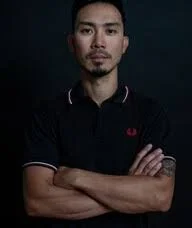"Acupuncture can alleviate psychoemotional conditions such as insomnia and depression"
One of the most basic theories of acupuncture and traditional East Asian medicine is that everyone is different. By gathering relevant diagnostic information and with treatment plans tailored for each individual, acupuncture can alleviate psychoemotional conditions such as insomnia and depression.
Most people would acknowledge the importance of sleep. However, not many people realize just how many of the common main complaints come from not getting enough sleep. Insufficient amount of sleep will increase the risks of or directly lead to irritability, headaches, heart diseases, weight gain, poor vision, infection, gastrointestinal conditions such as inflammatory bowel disease (IBD), depression, diabetes, and cancer. Sleep is extremely important to our overall health. Both the amount and quality of sleep is directly related to the physical and mental health.
In traditional East Asian medicine, insomnia is defined as a condition in which quantity and quality of sleep are decreased consistently for more than a month. Insomnia may be present in the form of one or more of the following: difficulty falling asleep, waking up easily throughout the night (Not from pain or full bladder), early awakening with difficulty going back to sleep, and dream-disturbed sleep. Insomnia may be due to multiple factors including pathogenic heat, overthinking, emotional frustration, and depression.
Nowadays, there are more scientific researches that study the effectiveness of acupuncture. Among many, in a research published in the Shanghai Journal of Acupuncture and Moxibustion, acupuncture was shown to be 90% effective in improving total sleep duration and sleep quality for patients with depression. Acupuncture treatments had similar clinical results and lowered the relapse rates just as much as antidepressants without any side effects. There were two groups; one being acupuncture group and the other being antidepressant medication (Mirtazapine) group. Total effective rate for acupuncture treatment was 90% while that of mirtazapine treatment was 92.5%. However, dizziness, drowsiness, vision changes, weight gain, increased appetite, and constipation were common in the medication group while acupuncture group did not experience any side effects.
In the research, Hamilton Depression Rating Scale (HAM-D) was used to measure improvements. Within one month of the treatment, the acupuncture group showed 9.7% improvement and the medication group showed 15.9% improvement in the HAM-D score. Within three months of the treatment, the acupuncture group showed 36.2% improvement while the medication group showed 32.5% improvement.
"acupuncture improves total sleep duration and sleep quality significantly, which in return, reduced the relapse rate for depression and insomnia and improved overall health, both physically and mentally, without any side effects."
For three months, the acupuncture group received treatments every other day while the medication group were given 20 mg of mirtazapine tablets orally once a day. The point prescription for the acupuncture group consisted of primary acupuncture points, which addressed the depression and insomnia, and of secondary acupuncture points, which addressed differential diagnosis of each individual. The primary acupuncture points included a point on the wrist (Shenmen – HT-7), a point on the leg (Sanyinjiao – SP-6), and a point between the eyebrows (Yintang). The secondary acupuncture points, which were added to address the different needs of each individual, included a point on the foot (Taichong – LR-3) and a point on the leg (Yanglingquan – GB-34) if the other symptoms they had were liver related symptoms such as headache, irritability, and rib pain, or a point on the arm (Jianshi – PC-5), and a point on the leg (Zusanli – ST-36) if the other symptoms they had were spleen symptoms such as poor appetite, indigestion, vomiting, nausea, and epigastric or abdominal pain. The acupuncture needles were stimulated every 10 minutes and were retained for 30 minutes.
It was concluded that acupuncture improves total sleep duration and sleep quality significantly, which in return, reduced the relapse rate for depression and insomnia and improved overall health, both physically and mentally, without any side effects.
Another study, a single-blinded, randomized, placebo-controlled research, concluded that acupuncture improves sleep and reduces insomnia when compared to sham acupuncture (random needling) and to a medication, estazolam. Acupuncture showed significantly superior results improving total sleep duration and sleep quality just like the previously mentioned research. The acupuncture point prescription in this research included few points on the head (Shenting – GV-24, Sishencong, and Baihui – GV-20), a point on the wrist (Shenmen – HT-7), and a point on the leg (Sanyinjiao – SP-6). The estazolam medication group experienced side effects such as daytime drowsiness.
In another research, acupuncture was shown to increase the bodily serotonin levels and the concentration of gama-aminobutyric acid (GABA) in cerebrospinal fluid. Serotonin is one of the neurotransmitters which regulate cognitive function, mood, sleep, and appetite while GABA is another neurotransmitter which reduces the excitability of the neurons thereby calming them down. In this research, acupuncture was shown to have 93.3% total effective rate in the treatment of insomnia. The point prescription included a point on the head (Shenting – GV-24), a point on the wrist (Shenmen – HT-7), points on the leg (Sanyinjiao – SP-6 and Zusanli – ST-36), a point between the eyebrows (Yintang), and a point behind the ears (Anmian). The needles were retained for 45 minutes each session. Additionally, acupuncture points in the ear (Subcortex and Shenmen) were used with ear seeds (Vaccaria seeds covered with zinc oxide tape) rather than needles and patients were to stimulate them for few minutes each day.
'Acupuncture acts as a guide to lead the body in the right direction to the healthy state because where you are headed is more important than how fast you are moving.'
In conclusion, many modern day scientific researches are done to show the effectiveness of the ancient art of healing. The researches showed that acupuncture successfully increased total sleep duration and quality while decreasing daytime dysfunction and sleepiness with no side effects. As acupuncture is a nature way to treat our body, acupuncture took some time to show the results. For conditions like insomnia and depression, it is highly unlikely that there will be drastic improvements with one treatment. One research was as long as three months. Acupuncture simply cannot alleviate the symptoms as quickly as the medications because acupuncture does not add synthetic hormones into the system or chemically modify the human body. Unless a condition developed overnight, it will not disappear overnight as like how it takes time and effort to change a long-term habit.
Though our body knows how to heal itself, sometimes it is overwhelmed and does not know where to start or which direction to head to. Acupuncture acts as a guide to lead the body in the right direction to the healthy state because where you are headed is more important than how fast you are moving.

























